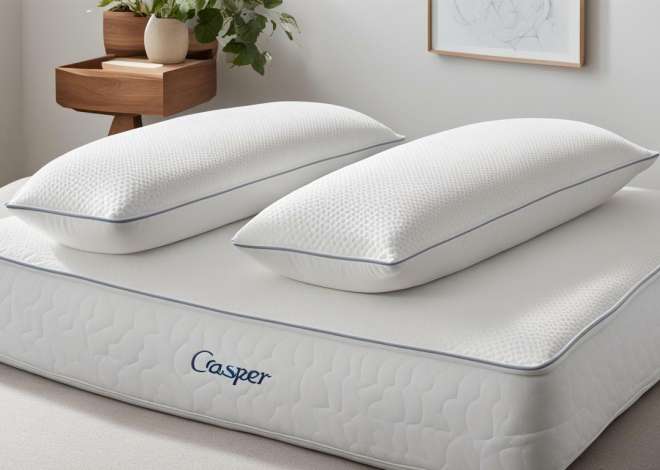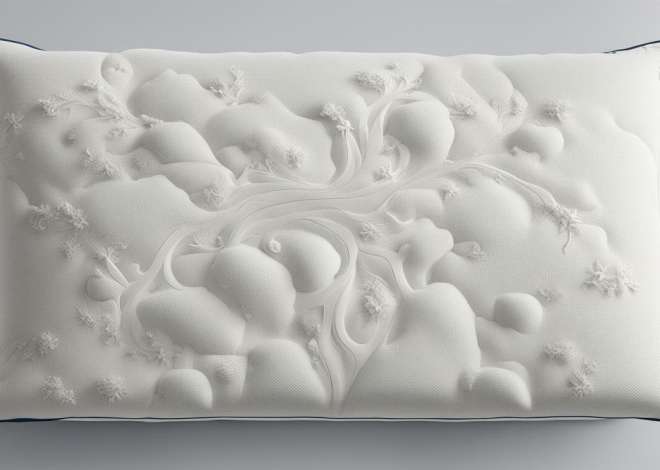
Do satin pillowcases hold bacteria?
Satin pillowcases have been all the rage in the beauty community for years because of their purported ability to help with acne and promote healthy hair. However, many people wonder if these luxurious pillowcases hold bacteria like other types of bedding. In this article, we’ll explore the science behind it all and give you tips for keeping your satin pillowcases clean and hygienic.
The benefits of using satin pillowcases
Before we dive into the topic of bacteria, let’s touch on some of the benefits of using satin pillowcases. Satin is a smooth and silky material that has a few advantages over traditional cotton or polyester pillowcases.
Firstly, satin is less abrasive than other materials. This means that it won’t cause as much friction between your skin and the pillow, which can lead to wrinkles and sleep lines. Secondly, satin is much gentler on your hair. It creates less resistance and tension, which can prevent damage and breakage while you sleep.
But as we mentioned earlier, there is one major concern that many people have when it comes to satin pillowcases- bacteria.
Another benefit of using satin pillowcases is that they can help regulate your body temperature while you sleep. Satin is a breathable material that allows air to circulate, which can prevent you from overheating or feeling too cold during the night. This can lead to a more comfortable and restful sleep, which is essential for overall health and well-being.
Understanding the role of bacteria on pillowcases
It’s no secret that our bodies are covered in bacteria. In fact, there are millions of bacteria living on our skin at all times. While not all bacteria are harmful, some types can cause issues like acne or infections.
When we sleep, we shed dead skin cells and oils onto our pillowcases. This creates the perfect environment for bacteria to grow and multiply. Over time, this can lead to a buildup of harmful bacteria on our bedding.
It’s important to regularly wash your pillowcases to prevent the buildup of harmful bacteria. Experts recommend washing your pillowcases at least once a week, using hot water and a detergent that contains bleach or an antimicrobial agent. Additionally, it’s a good idea to replace your pillowcases every six months to a year, especially if you have acne-prone skin or allergies.
How bacteria can impact your skin and hair
If there is an excess of bacteria on your pillowcases, it can cause problems for your skin and hair. For example, if you have acne-prone skin, bacteria can exacerbate your breakouts and lead to even more pimples.
Similarly, if bacteria builds up on your pillowcase, it can transfer onto your hair. This can lead to things like dandruff or an itchy scalp. Additionally, bacteria can weaken your hair and lead to breakage or hair loss.
It’s not just pillowcases that can harbor bacteria that can impact your skin and hair. Other common culprits include unwashed makeup brushes, dirty towels, and even your cell phone. These items can all transfer bacteria onto your skin and hair, leading to a variety of issues. To prevent this, it’s important to regularly clean and sanitize these items to keep bacteria at bay.
Factors that contribute to bacterial growth on pillowcases
There are a few factors that can contribute to bacterial growth on your pillowcases. Firstly, the amount of oil and dead skin cells you produce can impact how quickly bacteria grows on your bedding. Secondly, the temperature and humidity of your sleeping environment can also play a role.
Finally, the type of material your pillowcase is made of can impact bacterial growth. Certain materials, like cotton, are more absorbent than others. This means that they can hold onto oils and dead skin cells for longer periods of time, which can lead to more bacteria accumulation.
It is important to note that not washing your pillowcases regularly can also contribute to bacterial growth. Pillowcases should be washed at least once a week to prevent the buildup of bacteria and other harmful microorganisms. Additionally, using a pillowcase made of antimicrobial fabric can help reduce the growth of bacteria and keep your bedding cleaner for longer periods of time.
Satin vs. other types of pillowcases in terms of bacterial growth
So, how does satin compare to other types of pillowcases when it comes to bacterial growth? The truth is that while all types of bedding can accumulate bacteria over time, some materials are more likely to harbor it than others.
In general, satin is a less absorbent material than cotton or polyester. This means that it’s less likely to hold onto oils and dead skin cells for extended periods. However, this doesn’t mean that satin pillowcases are immune to bacterial growth altogether.
One study found that satin pillowcases had lower levels of bacteria compared to cotton pillowcases after one week of use. However, after two weeks of use, the bacterial levels on both types of pillowcases were similar. This suggests that while satin may initially have an advantage in terms of bacterial growth, regular washing is still necessary to maintain hygiene.
The importance of washing your pillowcases regularly
Regardless of what type of pillowcase you have, it’s essential to wash it regularly to get rid of any buildup of bacteria, oil, or dead skin cells.
We recommend washing your pillowcases once a week to ensure that they’re clean and hygienic. Make sure to use a gentle detergent, and avoid fabric softeners or other additives that can leave residue on the fabric.
Tips for keeping your satin pillowcases clean and hygienic
To keep your satin pillowcases in tip-top shape, there are a few things you can do:
- Wash your pillowcases once a week
- Avoid using fabric softeners or other additives
- Don’t bleach your pillowcases, as this can damage the fabric
- Hang your pillowcases to dry, rather than putting them in the dryer
The impact of satin pillowcases on acne-prone skin
If you have acne-prone skin, you may be wondering if satin pillowcases are a good choice for you. While satin can be gentler on your skin than other materials, it’s not a magic cure for acne.
If you’re struggling with acne, we recommend taking a holistic approach to treating it. This means incorporating healthy lifestyle habits, like eating a balanced diet and exercising regularly, in addition to using the appropriate skincare products.
The link between satin pillowcases and healthy hair
While there is no scientific evidence to suggest that satin pillowcases can promote hair growth, many people swear by them for keeping their hair healthy and shiny.
The theory is that because satin creates less friction and tension, it can prevent damage and breakage. Additionally, satin can help to distribute natural oils throughout your hair, which can keep it moisturized and healthy.
Other benefits of using satin pillowcases besides hygiene
In addition to helping with acne and promoting healthy hair, satin pillowcases have a few other benefits. For example, they’re incredibly soft and luxurious, which can help you get a better night’s sleep. Additionally, they can add a touch of elegance to your bedroom decor.
Conclusion
In conclusion, satin pillowcases are a great choice for anyone looking for a luxurious and gentle bedding option. While they can still harbor bacteria like any other type of pillowcase, they’re less likely to do so. By washing your satin pillowcases regularly and taking care of them properly, you can ensure that they’re clean and hygienic for years to come.


